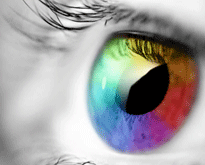Last Updated on March 4, 2024
The Power of the Image
The old adage “an image is worth a thousand words” is well-known. But an image can, in itself, contain a thousand images. One image on a banner can draw on multiple images stored in the human brain – cultural images, self-image and collective memories, each evoking particular emotional reactions and thought patterns.
Some see the focus on visual communication as the next evolutionary stage, following oral storytelling and communication through text, and a result of the rise of mass media. Others see it as a return to our roots, with cave art being amongst our earliest known means of sophisticated expression. The kind of visual cues utilized in advertising provoke a visceral response that taps into human instincts much older than the analytical approach associated with text.
Either way, the first permanent photograph, created in 1826 by French inventor Joseph Nicephore Niepce, is seen as having cultural impact perhaps equal to the invention of the printing press. It allowed mass production of ‘the image’.

Image Credit: Depositphotos.com
Images and the Human Brain
Images are capable of bypassing analytical centres of the brain, or at least moving through them so quickly they can more effectively access emotional centres, and they are capable of continuing to influence us subconsciously once imprinted on our minds.
Text, by its nature, is processed more critically. Of course, this makes images a dangerous tool in the wrong hands, but it also makes them effective in provoking powerful and positive responses. The human brain – so used to reacting instinctively to what is perceived in the world – interprets an image as reality and reacts appropriately.
Images in Advertising
The simplicity of the image, and its ability to vividly demonstrate a concept, make it effective in both seizing and holding the attention of its audience. All text essentially looks the same to the mind until analyzed, and even then the mind can easily wander off.
An image is distinct, and the mind need only devote its attention to that one distinct object that is the image, rather than to the multiple objects that form text. Research indicates that 65% people can remember a message containing both images and text, whereas only 10% could remember one that only held text.
Obviously this makes visual communication a pivotal tool in advertising. But a tool without a trained hand is simply wasted potential. Anyone can make up an image and message to advertise their product or service, but without the correct planning and expertise, will it have any effect?
Many variables can play a role in how it affects the viewer, including: What is the subject of the image? Where in the image is the subject located? How is the subject framed? Even the choice of colour has massive impact on what the viewer feels. Professionals are skilled in utilizing all these elements to achieve the desired result.
An image doesn’t necessarily have to be photographic either. Text styled in a certain way and combined with colours can qualify as an image, such as the kind used in the title of a company. A certain combination of colours will elicit a particular response, even when applied to something as seemingly trivial as the particular letter within a word that forms part of a slogan or brand.
Even badly designed images may be more adept at grabbing one’s attention then well-written text. But whether it provokes a positive or negative response is down to design. A well-designed image, whatever kind of image it is, can be the most powerful tool in drawing attention to a cause, event or brand.
Check out our previous articles!
- Paradoxical Art Sculptures By Nancy Fouts
- Paper Birds by Diana Beltran Herrera
- 20 Excellent Abstract Illustrations by Russ Mills
- Fascinating Factual Illustrations by Marcelo Gallegos
- Nerdy Dirty Illustrations by Nicole Martinez
Did you enjoy this article? We would love to hear your thoughts, so don’t be shy and comment below! Please don’t forget to subscribe to our RSS-feed or follow Inspirationfeed on Twitter, Google+ and Facebook! If you enjoyed the following article we humbly ask you to comment, and help us spread the word!

